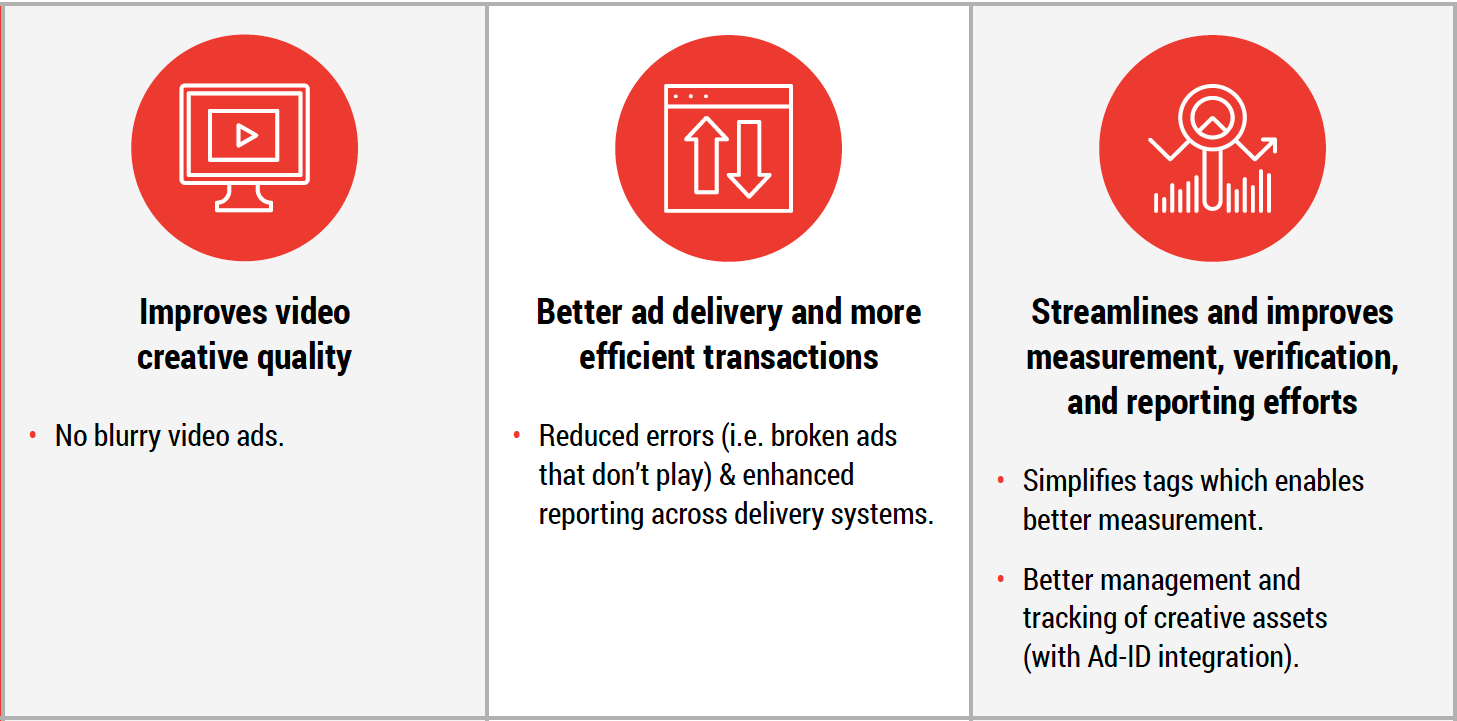We have officially entered a new decade and, for the media industry, the next 10 years will no doubt be filled with challenges–as we’ve already seen in this first quarter of 2020 with the arrival of COVID-19– but also with opportunities and excitement about the long-term growth prospects for digital video marked most recently by the launch of many new OTT streaming video services, the coming rollout of 5G, audio/voice activations, artificial intelligence, and other emerging technologies that will forever change how we consume media. When we look back over the past 10 years, we see that colossal changes were made in digital video advertising. In 2010, many of the giant media conglomerates that now dominate the space were just coming onto the scene. As these companies grew, bringing with them new video experiences and capabilities, the industry needed a way to serve ads in a standardized, scalable manner across various endpoints. IAB responded to this need with the first version of VAST (video ad serving standards) to help improve the delivery and measurement of digital video advertising across multiple platforms.
Fast forward to today and as the video ecosystem continues to evolve, standards are being updated accordingly. The largest and most recent update came with the release of VAST 4.x (current version VAST 4.2 was released in June 2019) along with Open Measurement and SIMID to replace VPAID.* This latest version allows for more seamless ad delivery across desktop, mobile and CTV/OTT devices, and addresses some of the transparency issues that were prevalent with previous versions (read this blog post to learn more).
These updated technical standards are not just important to ad ops groups and technical teams. They benefit the entire advertising industry by enabling smoother ad delivery for marketers, increasing revenue for publishers and, most importantly, creating a seamless video experience for consumers.
GroupM’s Joe Barone, Managing Partner of Brand Safety Americas, concurs and states:
Eric Hoffert, SVP of Video Technology at Xandr, adds that one of the major benefits of VAST 4.x is:
IAB’s Video Center of Excellence partnered with IAB Tech Lab to create this “VAST 4.x Benefits Overview”. The purpose of this guide is to provide increased awareness of the updated standard for advertising leaders and media buyers across the industry, with the goal of spurring greater adoption in 2020.
Wide adoption of the technical spec has three main benefits:

Given these vast (pun intended) benefits, companies like FreeWheel have incorporated a specific set of VAST 4.x capabilities into their products already, including Open Measurement (IAB’s initiative to standardize viewability and verification measurement) and UniversalAdId (a unique identifier for all commercial assets airing, like Ad-ID).
Matt Ross, Product Manager at Google is also a proponent of maintaining the current versions of the video ad serving standards. He says:
While implementing the updated VAST 4.x standards does require time and resources, it doesn’t have to be an “all or nothing” situation. Nick Novello, Product Manager at FreeWheel, shares a piece of advice for companies who want to start implementing these standards:
According to Eric Hoffert from Xandr, collaboration will be key to achieve wide adoption of VAST 4.x:
To that end, we encourage the industry to incorporate VAST 4.x into your product roadmap for 2020—if you haven’t already! Our hope is that this high-level benefits summary of VAST 4.x can serve as an educational tool to help your broader organization understand the importance of these standards and advocate for them to be utilized. If you have any questions or would like to get more involved, please feel free to reach out to [email protected] or [email protected].
*Note: We refer to the latest version of the video ad serving standards as VAST 4.x in this post and the benefits document. There are several versions of VAST 4 (summarized below) with the most current version being VAST 4.2. We are referring to it as VAST 4.x because, even if the spec progresses to 4.3 or 4.4 (neither currently planned), the stated benefits will remain accurate and true. At the moment, we recommend the adoption of VAST 4.2 or 4.1 as VAST 4.0 does not include support for Open Measurement or SIMID.
- VAST 4.0 was released in 2016. It introduced several new features including the separation of the media file from executable code and SSAI support.
- VAST 4.1 was released in 2018. The notable update for this spec included verification support with OMID and deprecated VPAID support.
- VAST 4.2 was released in 2019. It included minor updates to support SIMID.




